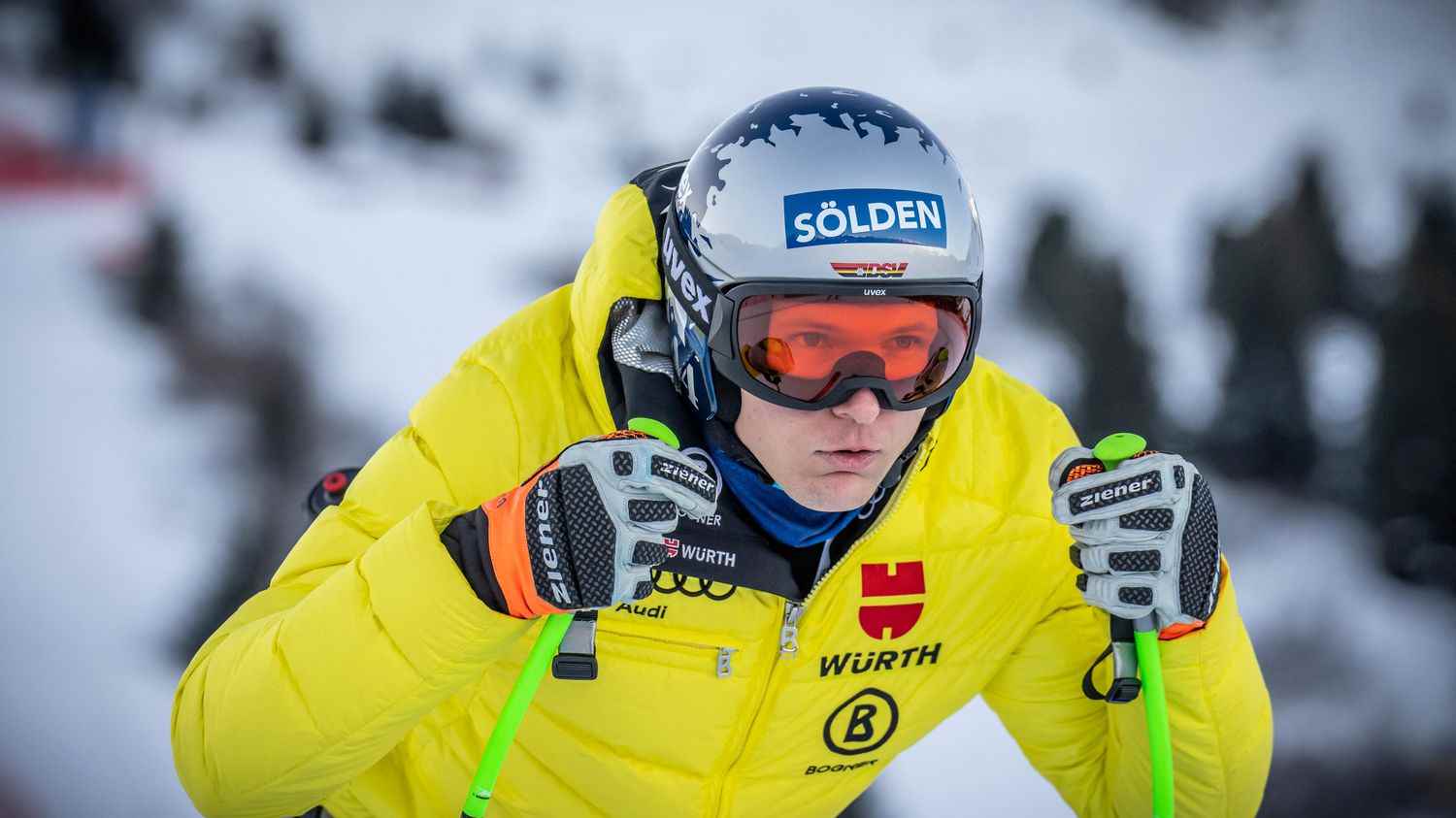Before passing the starting gate, the skiers have already raced several times…in their heads. And at different speeds.
For our eyes as spectators, this gives rise to strange scenes, with athletes squirming, waddling and talking alone, their eyes closed. But what is Marco Schwarz, who seems almost humming his favorite song, doing before the start of the giant’s first round on Friday?
For decades, skiers have developed an ability to experience the race even before setting off: visualization. A capacity essential to performance that they share with Formula 1 drivers, among others, and that they sometimes push very far, in their gestures and in their heads.
The Austrian and other track enthusiasts practice this central element of mental preparation in alpine skiing before the race. Some even wave their arms to virtually project themselves into the descent, like the Briton Charlie Raposo before the second round of the giant on Friday.

Make no mistake, if these scenes can make you smile, they are crucial for athletes. And for good reason: before the start, none of them ran on the track at full speed. To fill this gap, it is therefore necessary to multiply the meticulous reconnaissance. Then picture them.
A Go Pro built into the brain
“On skis, the most important moment before racing is reconnaissance to see the track and the layout. Except that at that moment, you see them almost at a standstill. Afterwards, you must therefore visualize your passage at 115-120 km/h. You have to put everything end to end in your mind, that’s visualization”, summarizes Marco Viale, head of the speed group of the French women’s team. His colleague in charge of the technical group of the Blues, Jean-Noël Martin, adds: “In your head, you have to imagine yourself with the speed, the movement of the ground, the blind doors… Experience matters a lot.”
Concretely, the athlete then remembers everything he has seen, noted during the recognition, aligns the images in the correct order and repeats them in a loop. “We redo the whole route from A to Z, as if we were there, and at more or less high speed”explains the descender Adrien Théaux, who has even developed a video recorder function. “At times I think to myself ‘There, I did not do it as I wanted’, so I go back and redo my passage. I can do it again, five, six, seven even eight times if necessary. Until I consider doing it right.”
From there, two schools coexist. Those who see themselves skiing filmed from above, as if by a drone, and those who see themselves in first person view. “Like a GoPro camera”popularizes our consultant Luc Alphand, from this second school. “It’s a way of soaking up what needs to be done technically, of soaking up the speed that will have to be sought, the rhythm. Visualization puts order in all that”advance Frédéric Perrin, boss of the men’s technique of the Blues.
“Even if it’s in the head, the thrill goes up, they’re really into it. They’re even able to tell you what the weather is going to be like.”
Frédéric Perrin, head of the technical group of the French men’s teamat franceinfo: sport
What the descender Adrien Théaux confirms, from the height of his 38 years: “It depends on the slopes because the snow conditions can change things. But if we do it in our head at real speed, we will take the same time as the day of the race. We’re like F1 drivers.”
years of learning
And this faculty is not new. “Visualization has always existed in alpine skiing, it’s part of the discipline, we were already doing it in the days of Jean-Claude Killy”smiles Luc Alphand. “We learn it from an early age at the ski club. But it’s not easy, because the kids don’t care at first, pursues the winner of the big crystal globe in 1997. When you have eight sets in practice, you can miss the first one. But in the race, you have to succeed from the first try.”
It therefore takes a lot of time and patience for coaches to instil this atypical know-how in their troops, since there is still no “master in visualization” to date. “It is not taught, it is practiced”, confirms Jean-Noël Martin. Until it becomes automatic, and we do it without realizing it, including in front of the cameras.
